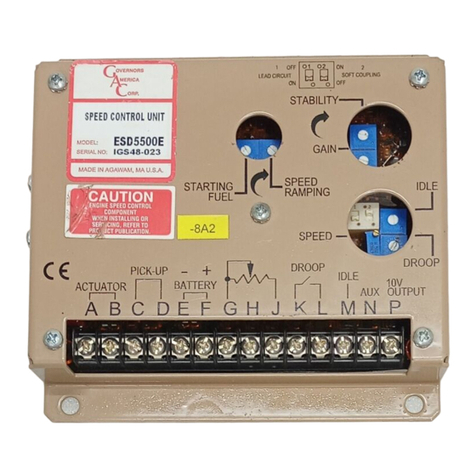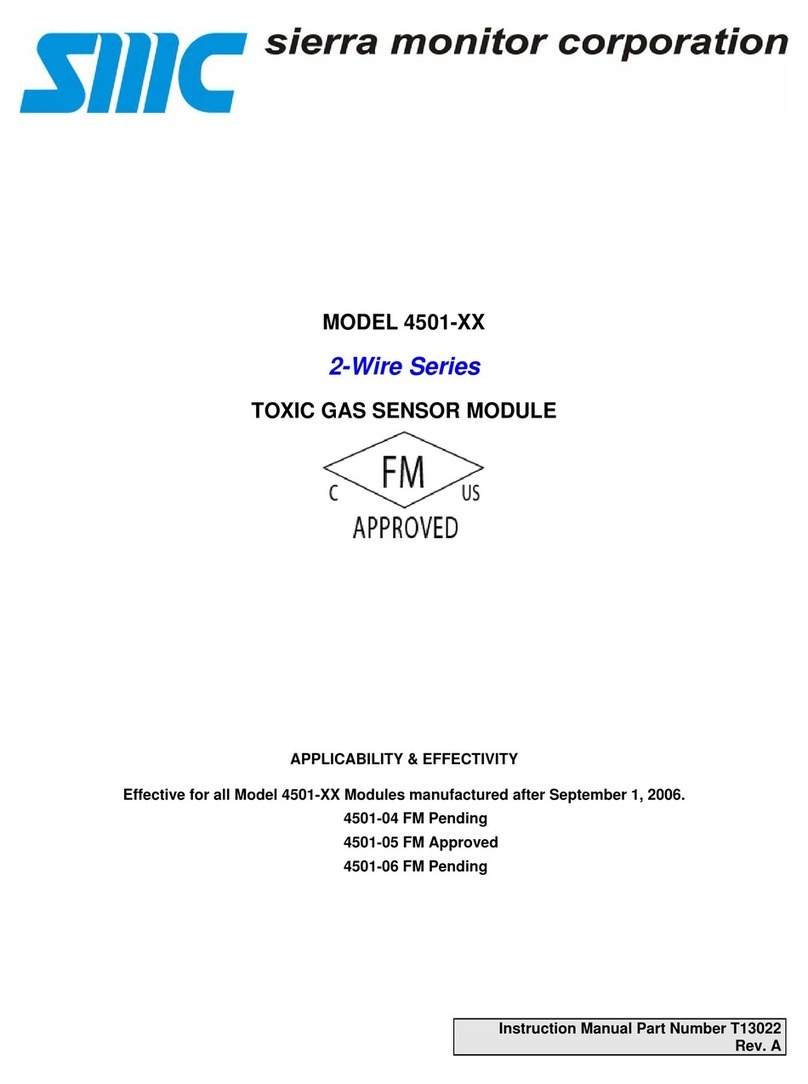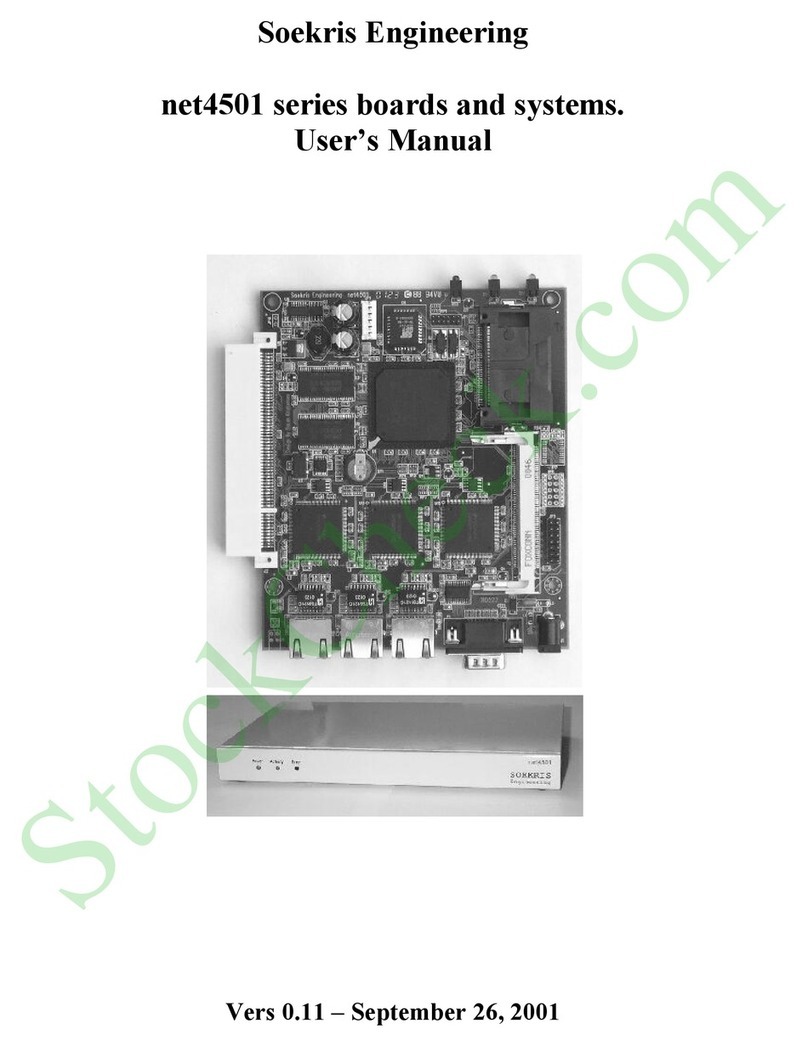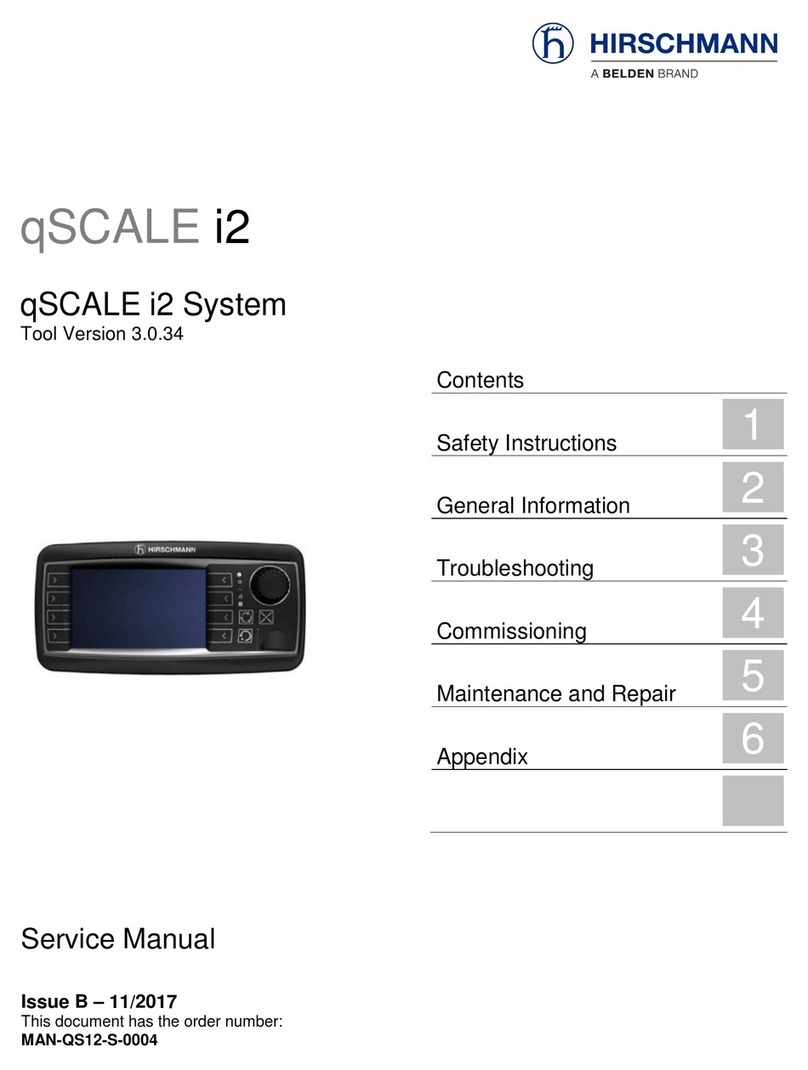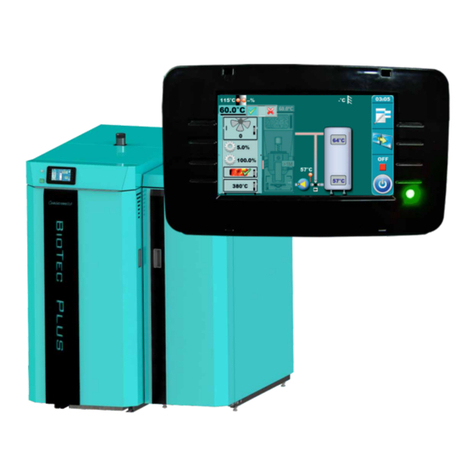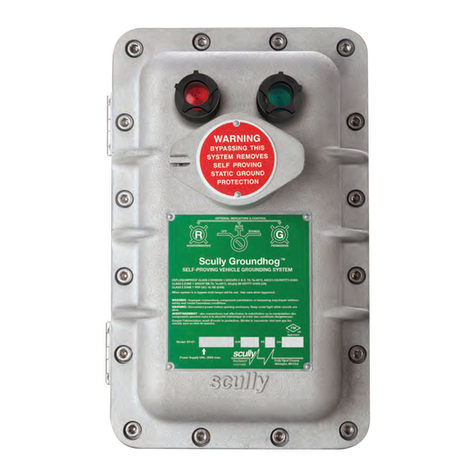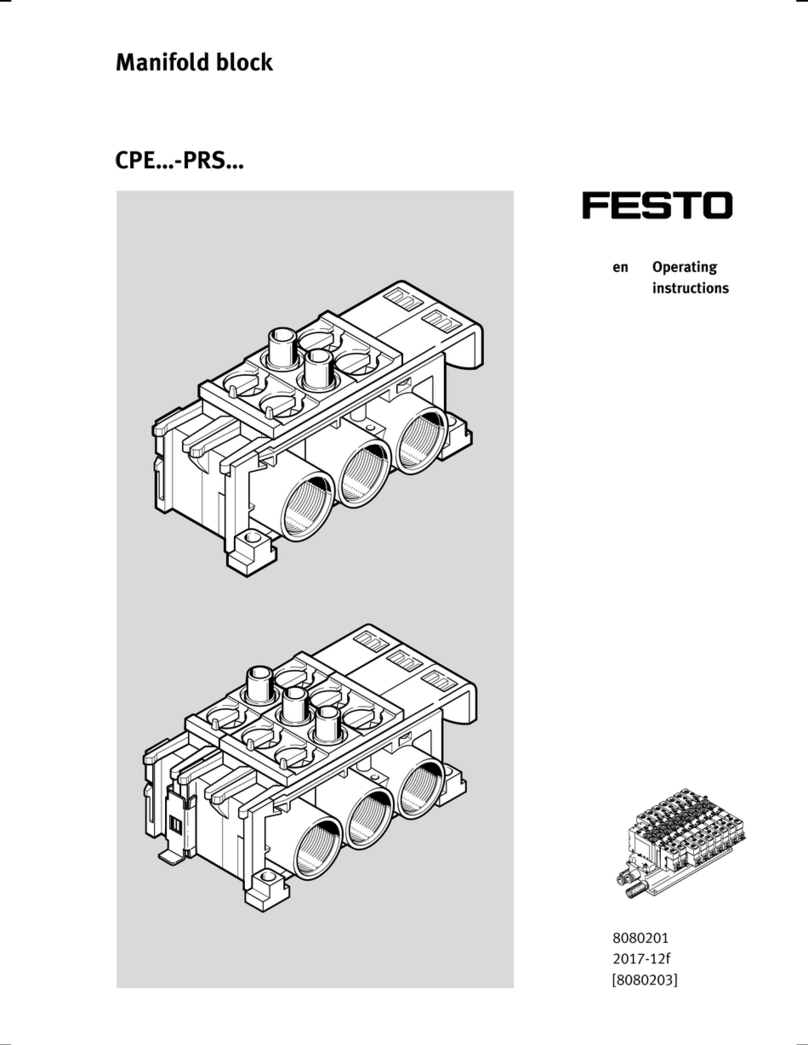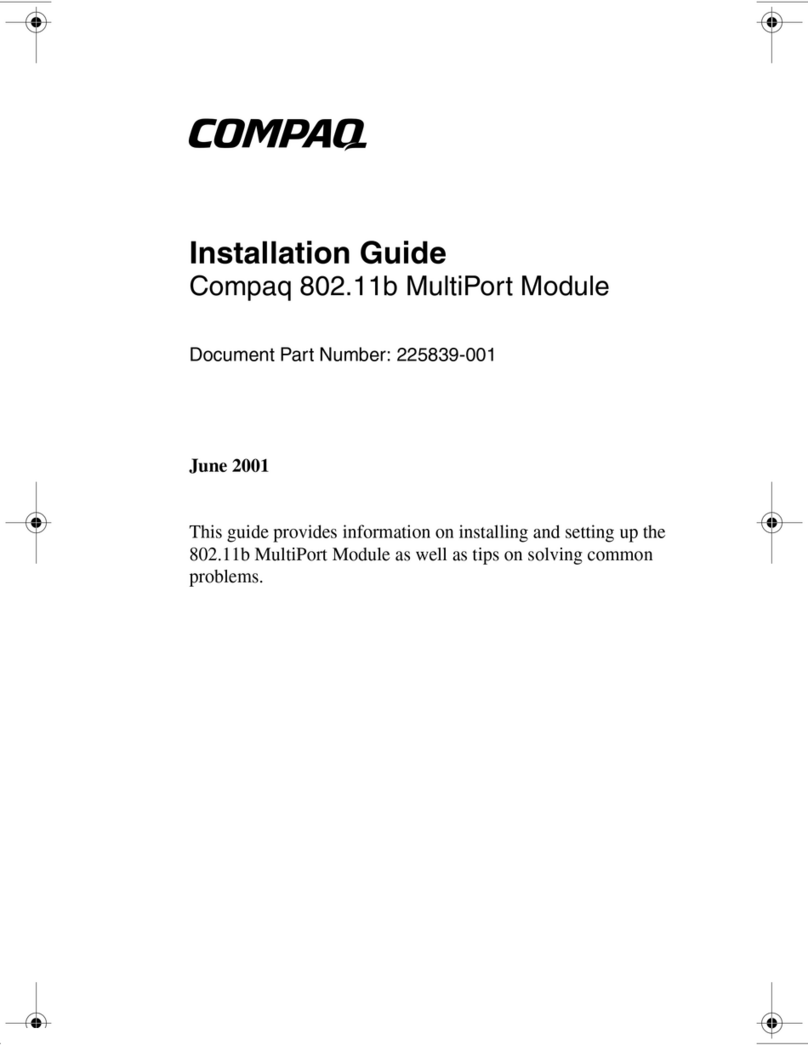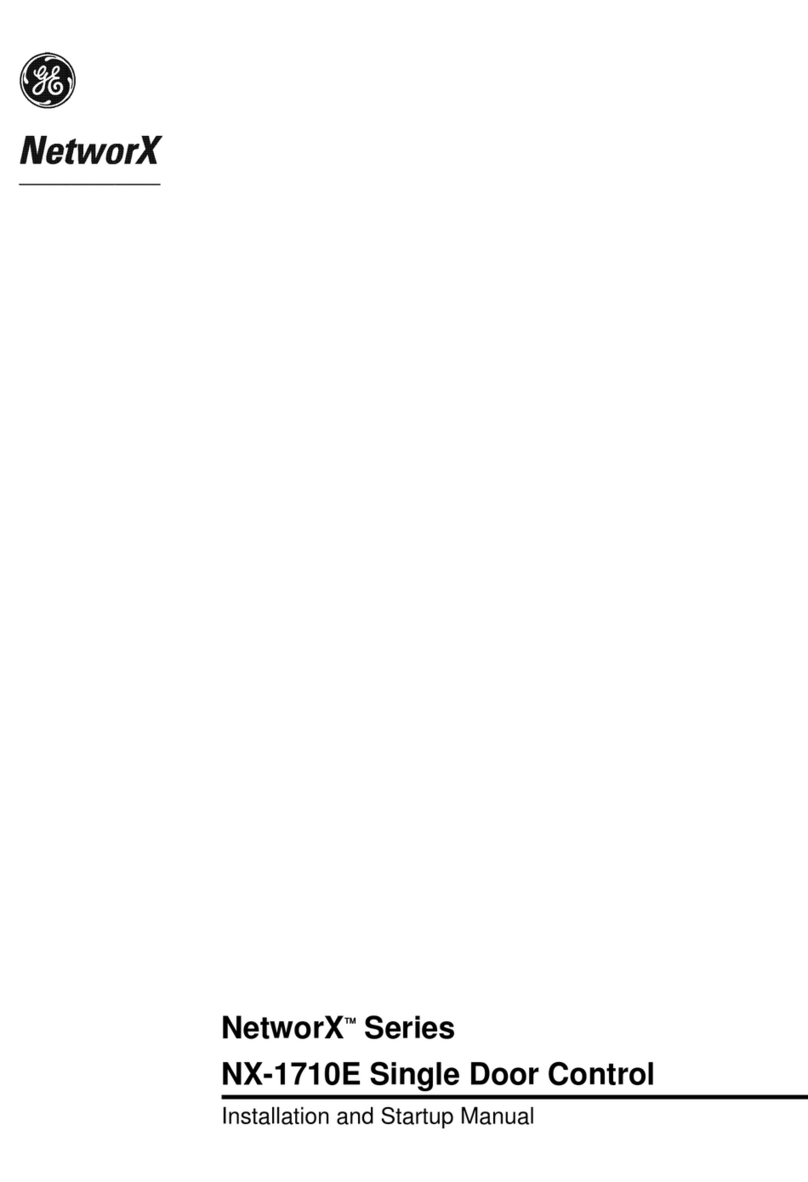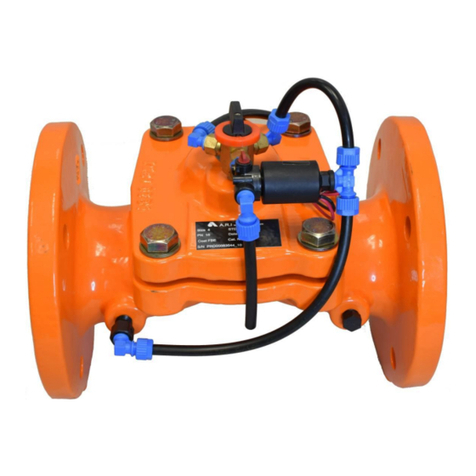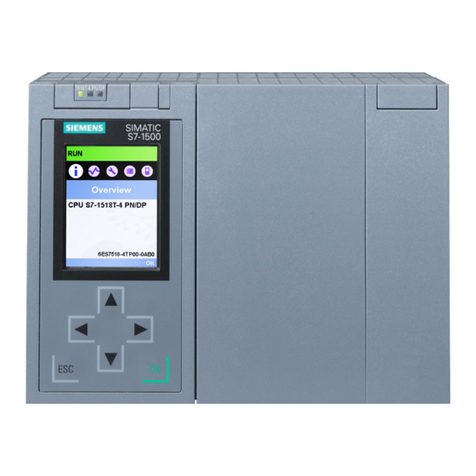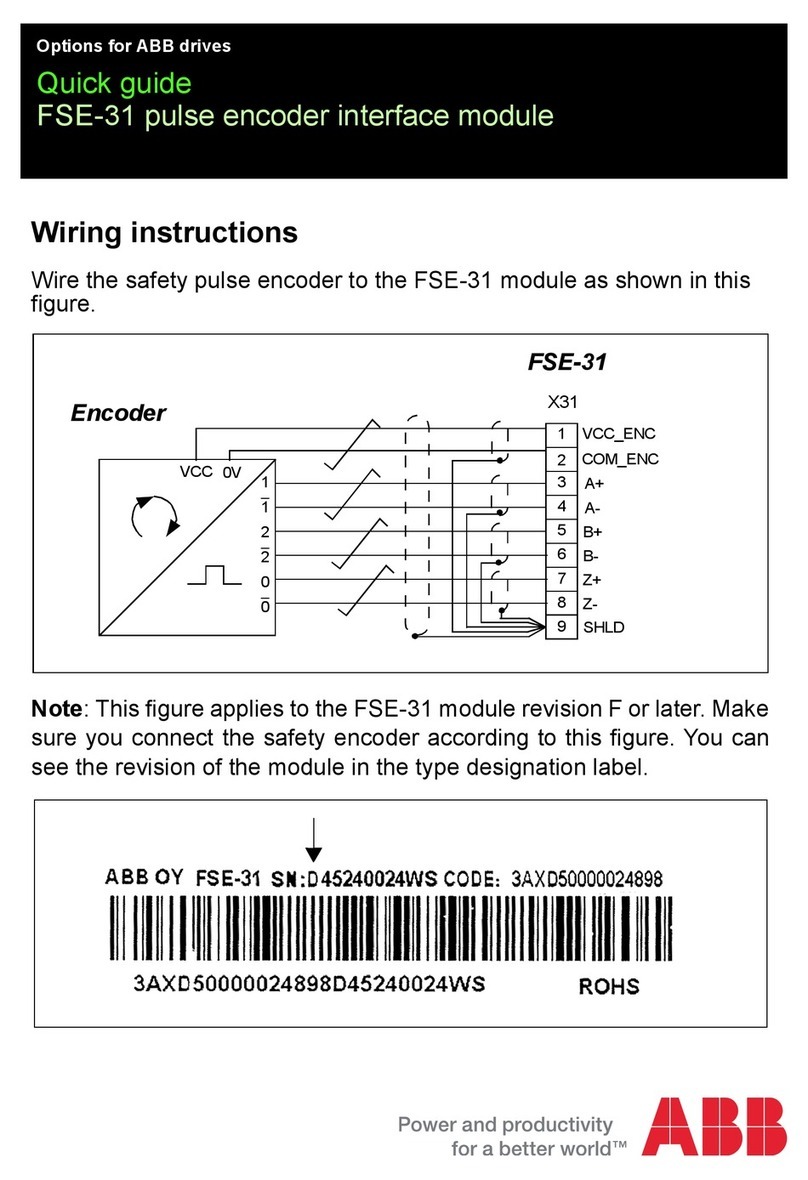
6Governors America Corp. © 2020 Copyright All Rights Reserved
ESD2200 Speed Controller 6-2020-A2 PIB1022
6
SYMPTOM NORMAL READING PROBABLE CAUSE
Engine
Overspeeds
1. Do Not Crank. Apply DC power to the
governor system.
1.
2.
After the actuator goes to full fuel, disconnect the speed sensor at Terminal
C & D. If the actuator is still at full fuel-speed then the speed control unit is
defective.
If the actuator is at minimum fuel position and there exists an
erroneous position signal, then check speed sensor cable.
2. Manually hold the engine at the desired
running speed. Measure the DC voltage
between Terminals H(-) & E(+) on the
speed control unit.
1.
2.
3.
4.
If the voltage reading is
1.0 to 1.5 V DC:
a. SPEED adjustment is set
above desired speed
b. Defective speed control unit
If voltage reading is above 1.5 V DC then check for:
a. actuator binding
b. linkage binding
Set point of overspeed shutdown set too low.
If the voltage reading is below 0.8 V DC:
a. Defective speed control unit
Actuator does not
energize fully
1. Measure voltage between Terminals H(-)
& E(+) on the speed control unit. Should
be 0.8 to 1.5 V.
1.
2.
3.
Replace the battery if weak or undersized.
Actuator wiring incorrect.
If the voltage is less than 1.5 V DC: SPEED set too low.
2. Momentarily connect Terminals E to H.
The actuator should move to the full fuel
position.
1.
2.
3.
Actuator or battery wiring in error
Actuator or linkage binding
Defective actuator
Engine remains
below desired
governed speed
1. Measure the actuator output, Terminals G
& H, while running under governor control.
1.
2.
If voltage measurement is within 1.5 V DC of the battery supply voltage
level, then fuel control is restricted from reaching full fuel position, possibly
due to mechanical governor, carburetor spring, or linkage interference.
If not, increase speed setting.
7SYSTEM TROUBLEShOOTING
If the engine governing system does not function, the fault may be determined by performing the voltage tests described in Steps 1 through
4. Positive (+) and negative (-) refer to meter polarity. Should normal values be indicated during troubleshooting steps, and then the fault
maybewiththeactuatororthewiringtotheactuator.Testsareperformedwithbatterypoweronandtheengineo,exceptwherenoted.
See actuator publication for testing procedure on the actuator.
STEP WIRES NORMAL READING PROBABLE CAUSE
1 E(+) & F(-)
Battery Supply
Voltage
(12, 24, or 32 V DC)
1.
2.
3.
DC battery power not connected. Check for blown fuse.
Low battery voltage
Wiring error
2 A(+) & B(-) 0-3.9 with speed trim. 7.1-
7.9 without speed trim.
1.
2.
Speed trim shorted or miswired.
Defective unit.
3 C(+) & D(-) 1.0 V AC minimum while
cranking
1.
2.
3.
Gap between speed sensor and gear teeth too great.
Improper or defective wiring to the speed sensor. Resistance should be between 30 to
1200Ω.
Defective speed sensor.
4 H(-) & E(+) 0.8-1.5 V while cranking
1.
2.
3.
Wiring error to actuator.
Defective speed control unit.
Defective actuator.
57(+) & 10(-)
while cranking 8.4-9.4 V
1.
2.
3.
4.
SPEED adjustment set too low.
Wiring error to actuator.
Defective speed control unit.
Defective actuator.
6 6(+) & 2(-) 0.2-1.0 V while cranking
1.
2.
3.
Wiring error to actuator
Defective speed control unit
Defective actuator
SYSTEM INOPERATIVE
UNSATISFACTORY PERFORMANCE








